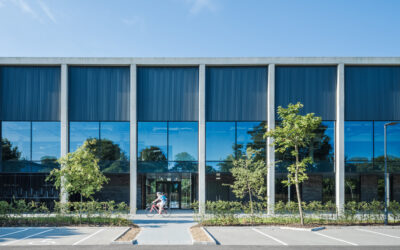by Emily Slupek and James Dexter, Divisional Science Sector Co-Leads @ Savills
As the lab market evolves, we’re increasingly seeing landlords offering to deliver bespoke tenant fit-outs as part of leasing deals.
On paper, it’s a powerful differentiator – a turnkey solution, quicker occupation and reduced capital burden for the tenant. However, in practice, aligning both parties around the design, cost, and delivery of that fit-out can be deceptively complex. How, then, can the process be managed effectively? The challenge lies in timing, certainty and commitment.
Aligning priorities is key
When a landlord agrees to fit out a space for an occupier, both parties may be aligned on the intention, but the specification, price and programme can all remain undefined. What’s more, it’s only once the design has progressed far enough to provide certainty on quality, scope and cost that the implications on timings, value and risk become clear. At this point, though, the clock is already ticking, money has been spent, but only now can both parties commit with any clarity of the offer.
How do you protect both landlords and tenants?
In order to protect both landlord and occupier, it is important to secure design, cost and programme certainty at the earliest point to enable commitment to proceed. However, this needs to include the bespoke requirements for the occupier at the desired quality, while also maintaining a fair and clear rent structure.
Fast-tracking to keep up with leasing deadlines only escalates cost and risk, often disproportionately for one party. Yet, extending pre-commitment design periods to increase certainty, means greater expenditure and time spent at risk, while also prolonging the period of uncertainty for both parties. So what’s the answer?
No silver bullet
Unfortunately there is no silver bullet, but there is a smarter way to approach the works.
Whether it’s speculative design work undertaken early, open-book procurement with clear flexible rent calculations, phased agreements, partnerships or simply carving out more time for negotiation – success comes from preparation, clarity and mutual understanding.
Science labs are complex environments and occupier needs can vary significantly. It is therefore critical to establish a mutual arrangement that enables the occupier to develop a clear, optimised brief – ensuring they secure the space they both need and want – while giving the early certainty around commitment and cost obligations. This clarity allows both parties to progress with confidence, optimising the programme, reducing risk, and providing a defined framework to manage scope and cost changes.
Ultimately, delivering successful lab spaces through landlord-led fit-outs demands a shift from a reactive to a strategic approach with a flexible, yet well-defined structure. By prioritising early engagement, transparent processes and clearly defined responsibilities, both landlords and occupiers can fully realise the benefits of this approach. In a market where speed, flexibility and certainty are all at a premium, those who invest in structured, mutual planning will be best positioned to unlock value and deliver spaces that meet the evolving demands of science and innovation.
For further information contact:
Emily Slupek, Director
(Divisional Science Sector Co-Lead | Head of Project Management, Oxford)


You can view the full article and learn more by visiting their website here.



